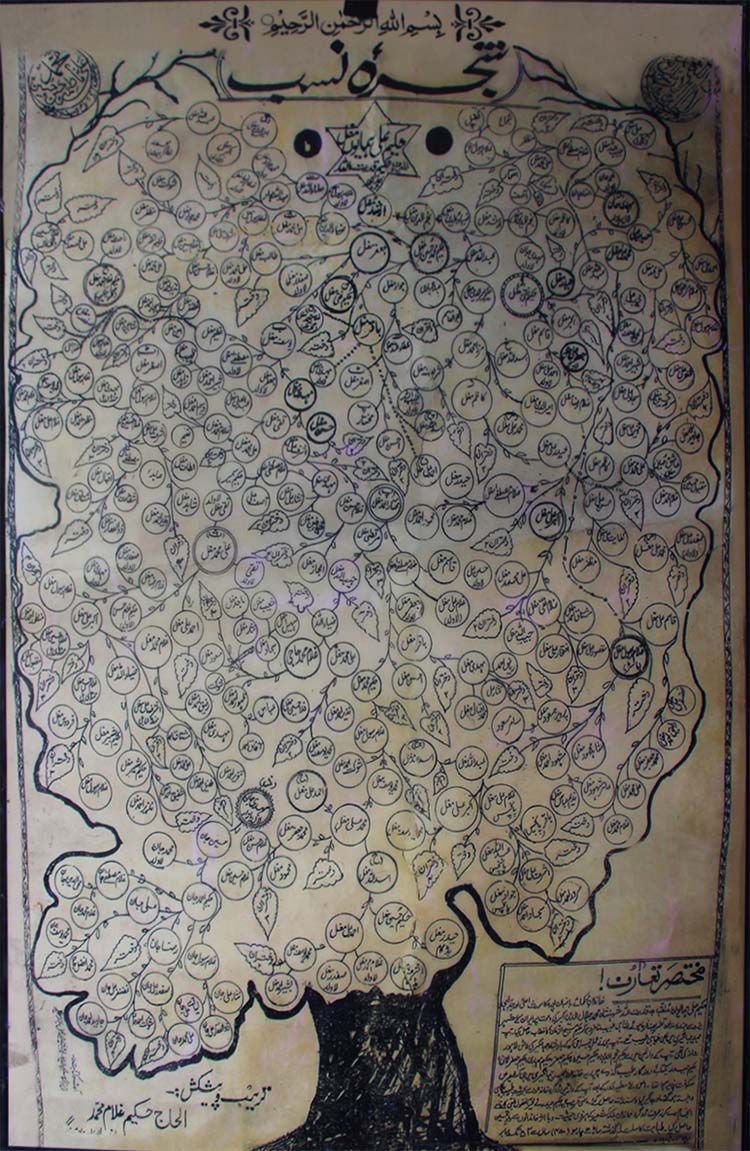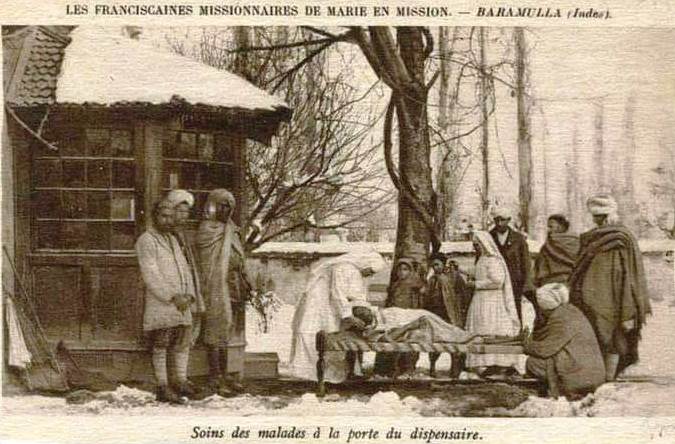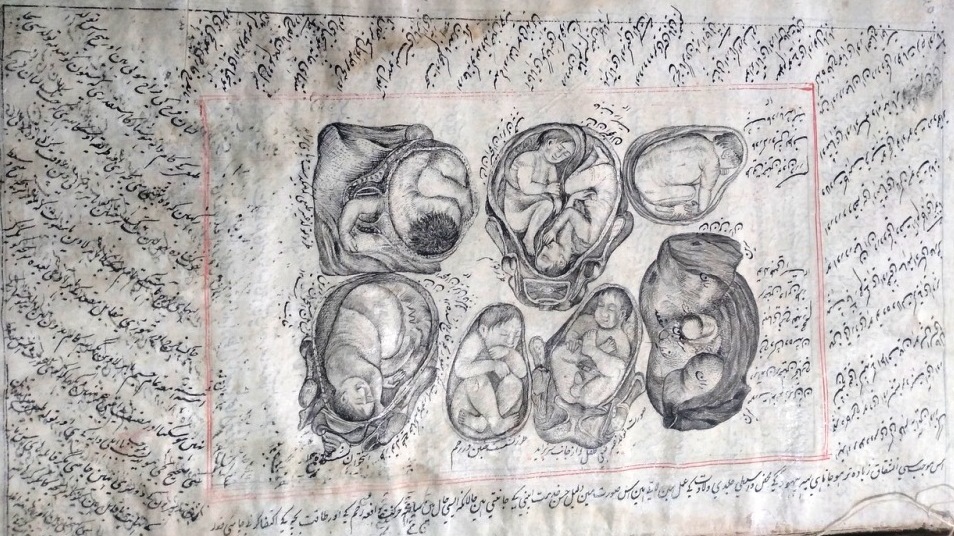Till the early twentieth century, the entire healthcare system was run by the Unani system of medicine with Hakeem’s at the apex of the unique pyramid. Kashmir excelled in making some of the best healthcare givers from the medieval Sultanate era, MJ Aslam writes

Centuries before the arrival of the European allopathic healthcare system, there was a well-established medieval regime of Unani medicine prevalent in Kashmir. Shiv Bhatta [not Shri Bhatta] was Shah i Tabib (chief physician) of Sultan Zainulabidin, the Budshah. He lived in Sultan’s Rajdhani at Nawshehra, Srinagar.
The Sultan was immensely impressed by Bhatta’s curing skills and honoured him with the title of Afsar ul Tib. Bhatta died without writing anything on Tib for posterity. On record, however, it was during the Mughal era when Ilmi Tib and Unani (Yunani) system of medicine appeared in Kashmir and touched the summit of excellence in successive reigns of Mughal Emperors and their Subedars.
In Successive Regimes
The first Kashmiri Hakeem who rose to prominence was Hakeem Abdullah Gazi in the reign of Emperor Akbar (1586-1606). Gazi was educated and trained in Ilmi Tib in Delhi. His pupil Rashid Baba Majnoon Narwadi was also an efficient Hakeem of his time. In Shah Jahan’s reign, Majnoon’s three disciples, Mohammad Sharief Ganayi, Abdul Rashid Ashai and Abdul Qadir Ganayi were Kashmir’s famous Hakeem’s. The son of Hakeem Abdul Qadir Ganayi was Hakeem Inyatullah who had such an ability, it is said, that he diagnosed the disease from a mere glance at the patient’s face. He lived during Emperor Aurangzeb’s reign.
Hakeem Mohammad Azam Kashmiri was a well-known physician in Maharaja Ranjit Singh’s court in Lahore. In Sikh Period, Hakeem Dindar Shah, Hakeem Maqbool Shah and Hakeem Mustaffa Shah were well-known Unani doctors living in Kashmir. Hakeem Ali Naqvi, Hakeem Noorudddin, Hakeem Ghulam Rasool, Hakeem Baqaullah and Hakeem Yousuf were famous Unani physicians in the eighteenth century. Hakeem Ghulam Rasool died in Delhi. He was a prodigious scholar and an eloquent orator. He spent his life in luxury due to his companionship with Nawab Ghazi al-Din Ferozjang III (1736-1800).

Hakeem Mohammad Jawad was an eminent doctor in the Afghan period. Hakeem Naqi, Hakeem Noor ud Din, Hakeem Namdar Khan and Hakeem Kandar Khan were other well-known Hakeems in the Durani era of Kashmir. The last two migrated to Delhi for treatment of the sick. Hakeem Deendar Shah was the personal physician of Nazim Sheikh Ghulam Mohiuddin (1842-1846), the last of the Sikh rule governor’s in Kashmir.
Hakeem Mohammad Baqir was another famous Hakeem. In Maharaja Ranbir Singh’s reign (1857-1885), Baqir was conferred the title of Afsar ul Tib by the Maharaja. Towards the end of the nineteenth century and the beginning of the twentieth century, there were many Hakeems all over Kashmir. Most prominent were: Hakeem Ahmad Ullah alias Ame Hakeem of Zaina Kadal; Hakeem Ghulam Mohi Ud Din of Naidyar Rainawari; Hakeem Daidar of Baghwanpora Lal Bazar; Maqbool Shah of Rainawari; Hakeem Salam ud Din of Hazratbal (all from Srinagar); Hakeem Habibullah of Baramulla; Hakeem Ahsan Sheikh of Nowgam; and Hakeem Abdul Aziz Kozgar of Budgam.
One Hakeem of the early twentieth century needs a special mention – Hakeem Aziz Ullah of Muslim Pir Sopore. He had earned the name of the most reputed Unani physician and treated patients at his residence from north Kashmir, Muzaffarabad and Srinagar. Once he was called specially to Srinagar by the family members of a rich man, Qazi Ghulam Mustaffa of Maharajgunj, for treatment. A God-fearing man, Aziz Ullah built Sopore’s Muslim Pir Masjid. After his death in 1926, his son, Hakeem Sanaullah (b1902), started treating patients for free.
Hakeem Families
There were three famous families of Hakeems in Srinagar in the last century. Hakeem Ali Mohammad alias Ali Hakeem (1906-1988) of Zaina Kadal. Later, he shifted to Gojwara where he treated patients at a new clinic cum residence. He was President of the Jammu and Kashmir Tibiyya Conference, a chapter of All India Tibbiya Conference. He died in 1988.
Another family hailed from Naidyar Rainawari. Their house is still famous as Hakeem Manzil. Hakeem Shyam Lal alias Shyam e Bhatte (1900-1984), a Kashmiri Pandit, was an Unani physician of great fame who belonged to a family of Kashmir’s hereditary Hakeems. His residence cum clinic at Shalyar Habba Kadal Srinagar was always thronged by patients. Despite the fact that he changed his residence to Karan Nagar, Srinagar, he continued to see and treat patients at Shalyar. He was also President of the Jammu and Kashmir Tibiyya Conference in 1966-67. He was considered an expert in the treatment of kidney stones. The patients were prescribed special sheera by him on daily basis for a few months till kidney stones would pass out with urine.
During the first half of the twentieth century, it is said that fifteen Hakeems of Srinagar were on the payrolls of Maharaja. In Srinagar, there is Unani Sageer, a Mohalla near Nigeen, which is known as Hakeem Mohalla as most of the famous Hakeems since Emperor Akbar’s time lived in this locality. Their ancestor, it is claimed, was Hakeem Ali Humayun who had attended and treated Emperor Akbar when he fell ill during one of his Kashmir visits. Hakeem Mehdi, Hakeem Masood and Hakeem Altaf are said to be the descendants of Hakeem Ali Humayun. They all belong to this locality. There are some other city localities or villages with the prefix Hakeem to their names indicating the areas might have had some connection with this class of physicians of yore.
Unani Medicine
Unani medicine or Hikmat is an Arabic-Persian term that was introduced by the Mughals in the Indian subcontinent in the thirteenth century. The families of eminent Hakeems of Persia and Arabia came to India and introduced the Unani system during the Mughal rule, considered as the golden age of Greco-Arabic medicine in India.
Hakeems were mostly Muslims who were learned men, also called tabibs. Many Hindus too were Hakeems of eminence. Hakeems followed the Unani (Greek, Grecian school of medicine) or the Misri (Egyptian school of medicine). While Muslim Hakeems followed the Unani School, generally most of the Hindu physicians, called Vaids, followed the Misri School.

The most reputed Hakeems in India were in Emperor Akbar’s time. Hakeem Alavi Khan, Hakeem Muhammad Ashraf Kashmiri and Abdul Karim Kashmiri were well-known Kashmiri Hakeems in the Mughal Court. Many Kashmiri families of Hakeem’s moved to Delhi, Deccan, and other places of Mughal India to practice medicine. In history, Kashmiri Hakeems contributed immensely to the development of Unani medicine in the Mughal Era and thereafter in India. Many of the eminent Hakeems of Mughal India had Kashmiri ancestry.
One of the most important physicians of Jahangir’s Era was Hakeem Sadra Zaman whose father was Akbar’s royal physician. In the early Mughal Era, the famous Hakeems came to Kashmir to treat people. Zaman accompanied Emperor Jahangir in 1620. He treated Emperor Shah Jahan and his daughter, princess Jahan Ara successfully. After resigning from duty, he performed Hajj and died in Kashmir in 1650 and is buried in Srinagar. He was greatly respected by Mughal Emperors. His pupils were among Kashmir’s pioneer Hakeems.
Then, Hakeem was considered a doctor of philosophy, a doctor of medicine, and a learned man. Though Muslims were associated with Unani Tib, the Brahman Vaid was usually “a physician purist”. Unani system of medical care is based on the established knowledge of thousands of years. Hakeem uses herbal, mineral and animal-based drugs for curing the sick.
The Eco System
In Kashmir, Hakeem’s used to treat the sick in Hakeemwan or Hakeemkhana, which were the earlier avatar of clinics and dispensaries. The shops selling herbal medicine were called Bohir-wan. A Bohur (pharmacist of today) is the “vendor of drugs, spices, herbs, groceries; a druggist, spicer, grocer”. There were and are certain well-known localities of Srinagar like Nowhatta, Jamia Masjid, Saraf Kadal, and Maharaji Bazaar, where one would still see flourishing Bohir-wans. Now, they are called Unani or Hamdard medicine shops.
Hakeem’s were also “compounding medicines” themselves for selling to the patients. The practice or profession of a Hakeem which was as a rule hereditary in character was called Hakeemi in common parlance. The Hakeem’s are and were addressed with an added honorific to their name as Hakeem Saib. This was a practice followed throughout India as today we have Doctor Sahab or had Vaid Ji of the past. Hakeems used only natural herbal plants, their leaves and roots as medicine for the treatment of the sick. It is said that the shepherds during summers collected herbs from mountains and jungles for the Hakeems of Kashmir. The medicinal herbs were made available for patients either at the clinic of the Hakeem or at the Bohir-wans. Some herbs of medicinal value were imported from outside.
Bone Setters
Apart from Hakeems, there were non-invasive surgical practitioners such as bone-setters (watan-gir) and leech-appliers (dirki-gir) in Kashmir. Watan-gur was one who was setting broken, dislocated limbs or bones or strained muscles by massaging with oil or turmeric powder and by straightening dislocation by pulls or pushes. Some watan-girs set up their shops for the treatment of orthopaedic trauma at famous shrines of Srinagar and Budgam Kashmir on Thursdays and Fridays.
Some famous bone-setters practised the profession at their homes like Sid e Baing, Wali Baing and their disciples of Teilbal, and Ghulam Mohammad Qalinbaf and Ali Mohammad of Fateh Kadal Srinagar. Bone-setters also practised at Bandipora. It is said that bone-setters were reciting kilmaat (verses) while treating a patient. Dirki (leeches) were much used by Dirkigur of old Kashmir. Leech appliers were prescribed by Hakeems for a patient. They generally believed that the cause of skin diseases including persistent shuh (frostbites) of feet, hands, ear-helix and phephir [boils with abscess] was the blood infection. Thus, the infected or impure blood was drained away through the services of a Dirkigur who applied leeches on a body part to suck the impure blood from the patient’s body.
Till the twentieth century, leech appliers worked in Kashmir. There were also female leech appliers, Dirkigirin, as well. Generally, it was the Naid or barbers’ families that were associated with the leech-appliers’ profession in Kashmir. The leeches would swell up after draining the blood of the patient and automatically fall down on the floor. The leech-applier squeezed all blood from his leeches before putting them back in his container, Dirki’weir.
The barbers were also called in by Hakeems to cut and bleed the patient from the vein “marked” by Hakeem for draining out impure blood. As this was the “only knowledge of surgery” Hakeem’s possessed, Maharaja in the epidemic of 1872 had to issue orders that “the Hakeems were not to bleed for cholera as they had been in the habit of doing”. The native Hakeems regard a pedilavium of the leaves as very efficacious in cholera.
In 1895, Sir Lawrence recorded there were “300 Hakeems or doctors in Kashmir and as a rule, the profession” was “hereditary. …… and I have known cases in which some of my subordinates have derived great benefit from the skill of the Kashmiri Hakeem…….. Hakeem never attends midwifery cases”. The skilled elderly women midwives, locally known as Warin, were called to assist the delivery cases and perform the gynaecological operation at the patient’s home.
Parhaiz Culture
Hakeem’s were very strict about the diet of their patients. They prescribed strict dietary restrictions (Parhaiz) with herbal medicine for the patient. To date, Parhaiz Si’un, which meant the strictly prescribed diet by Hakeems in the past, is a very much relevant phrase being used in Kashmir society to convey that someone is following a doctor’s dietary advice. Hakeem’s sometimes allowed only simple rice water and dandelion leaves (hund in Kashmiri) to a patient suffering fever over weeks.
Such a strict dietary disciplinarian attitude of Hakeem’s gave birth to certain idioms in the spoken Kashmiri language. For example, Hukm i Hakeem o Hakeem, Chuh Margi Mufajaat (the ruler’s and doctor’s orders are like sudden death as they are to be followed); Hakeemas Te Hakeemas, Nishi Bachavtam Khudayo (O, God, protect me against orders of Ruler and Doctor) and Yi Hakeemas Dizhi Ti Koneh Dizhi Bemaras (why can’t that be given to the sick what is given to the doctor), and Neem Hakeem, Khatri Jan (a half-baked hakeem can be life-threatening).
Treatment Regime
The whole diagnosis of Hakeem centres around the equilibrium of Akhlat (humours, Mizaj) of the body, classified into four kinds: hot, cold, dry and wet. Hakeems used medicines to undo imbalance in any of these situations within the body. Some herbs are thought to be cold and good for hot humour; some are hot and good for cold humour; some are damp and beneficial for a dry state of humour, while some dry herbs are said to be beneficial for a damp and wet state of humour.
The most common herbal prescriptions included Sheera, Sharbat, liquorice root (shangir in Kashmiri), lasora/lasoda (sebestan), and arnebia benthamii (Kahzaban). One imported herb used as the ultimate drug or medicine for serious cases including protracted fever was Chob-Cheeni, Smilax China. It grows abundantly in China in wild from where it was exported to Punjab, Calcutta, Bombay and Kashmir via Leh. A mere prescription of this would indicate the patient was seriously unwell. Kashmiri saying, Zan Chus Chob-Cheeni Logmut conveys a feeling of seeing a person in a robust state of health after having taken any kind of diet or special food.
In case of recurring pains, and stomach ailments, Hakeems prescribed the use of powder or malish (massage) of Zahar-Mohr on the troubled part of the body. It is a bezoar and is used as an antidote to poison and a pain reliever for the sick.
Though fundamentally using herbs, they also used certain stones, gems and specific things taken from animals. Zahar-Mohr was obtained from Ladakh and Tibet and imported to Punjab and Kashmir via Leh. In Punjab, it was applied in snake-bite cases. This costly bezoar was also cut into the making cups, bowls, plates, and so on of a tea set and it was generally believed that cups, bowls, etc, would split if poison was put in them. Genuine Zahr Mohr tea sets fetch good prices. They are still considered items of luxurious choice in household crockery items.
Hakeem’s believes Zahr Mohr was formed by the spittle of the Markhor goat (Capra megaceros) falling on stones. Markhor is the wild goat of Hazara and the NW Himalaya and exists in Kashmir also. It is called Markhor, owing to the fable that the animal killed snakes by looking at them. Yet another fable was that when Markhor’s foam falls on certain stones it turns them to Zahar-Mohr, precious stones of serpentine. Unlike Bohr-wans, Zahr Mohr would be sold by Moharkans who dealt with precious stones.
Kashmiris had great confidence in their Hakeems and they mostly consulted them for ordinary ailments. With the emergence of allopathic medical care towards the end of the nineteenth century in Kashmir, the local Hakeems lost much of their influence. Unani medicine lacks a remedy for emergency cases like cardiac arrest, accidental trauma and so on. Despite the progress of modern medical science, Hakeem’s, bone-setters, and leech appliers still exist and they still have a small clientele.
















I want to learn Hi km at,help me please,I am also diabetic patient since 15/years,is there any herbal medicine for diabetes.